1970 Chevrolet Caprice Sport Sedan: Aqua Dreamboat
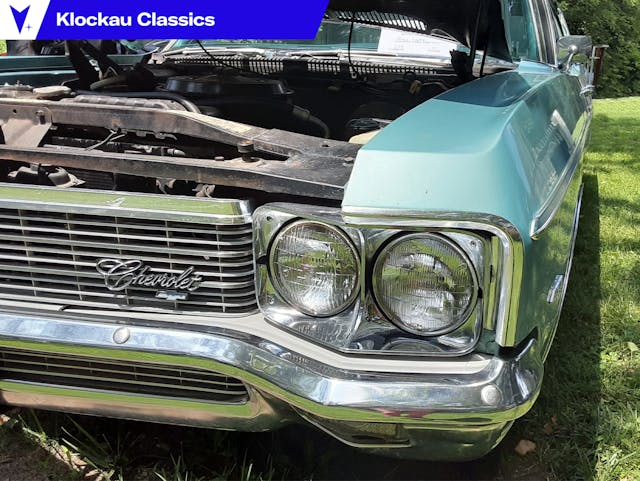
Do you ever feel old? I don’t terribly often, but I do more so when I see a great old car. Today’s case in point: This magnificent 1970 Chevrolet Caprice. It’s almost 54 years old, but to me, it’s still only 20 years old—25 max!

I remember these due to a brief but vivid childhood memory. An old friend of my dad’s, Donnie Moore, always drove cheap used cars. He was hard on them, so they were replaced with rather frequent regularity. He nicknamed many of them: a Chevrolet Vega was “Darth Vega” and a Thunderbird of indeterminate age was dubbed the “Thunderchicken.” I also remember, at various points, a blue, circa-1975 Dodge Colt coupe, an ’84 or ’85 Buick LeSabre, and a Grand Marquis.
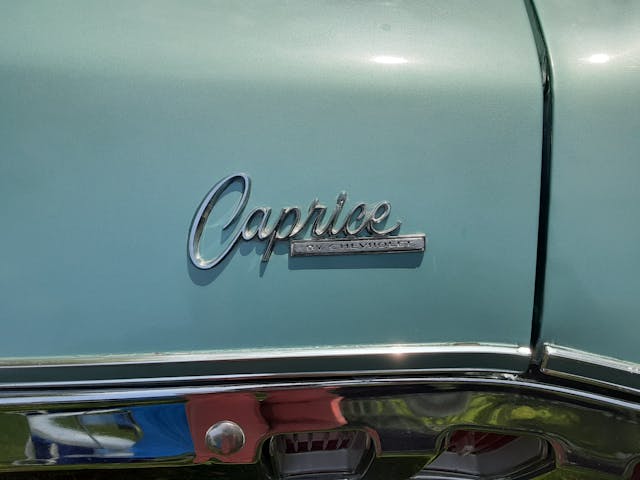
Whenever he got a “new” set of wheels, he would frequently stop by my parents’ house to show the car to my dad. And one day, probably around 1989–91, he stopped by with a full-sized 1970 Chevrolet.
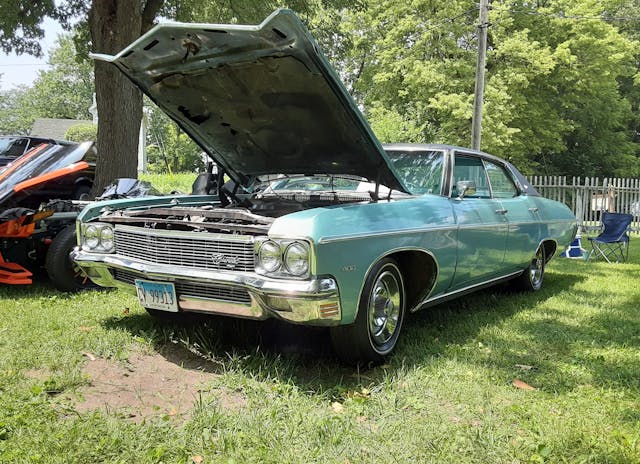
I am not 100 percent certain if it was a Bel Air, Biscayne, or Impala, but it was a four-door pillared sedan in metallic gunmetal gray, with a black interior. I think it was a Bel Air, but honestly can’t remember.
It was in slightly weathered, but intact, shape—right down to the factory wheel covers. I think I was interested because it was the first 1970 big Chevy I’d seen up close. I was familiar with the 1971-up Caprices, because a neighbor down the block had a ’71 four-door hardtop in that light lime green metallic that was so popular back then.
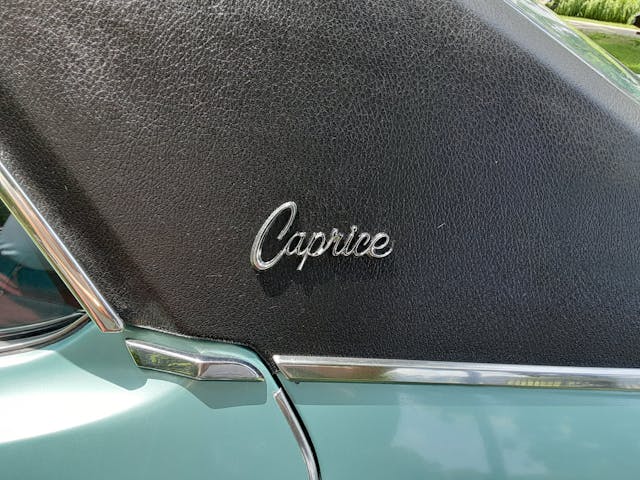
Anyway, he stopped, parked in the driveway, and then he and my dad commenced chatting. I was approximately 10 years old at the time, and I proceeded to gawk and circle the Chevy with avid interest.
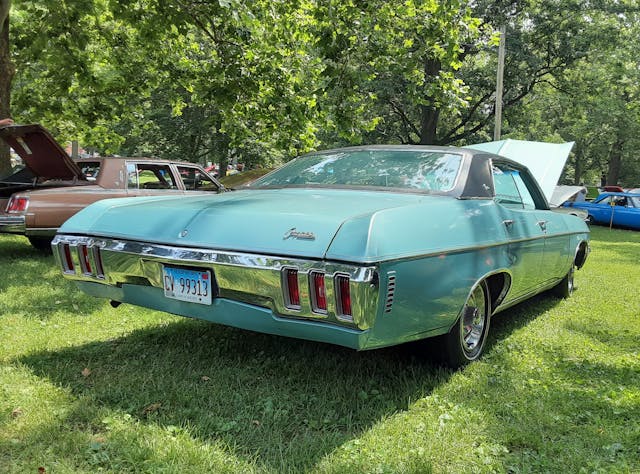
The ’70 Chevrolets were a facelifted version of the all-new 1969 versions, but there were several noticeable cosmetic changes. The biggest one was that the “loop” bumper/grille, encircling the grille and headlights on 1969 versions, was replaced with a conventional chrome bumper below the quad headlights and all-new grille. Out back, the elongated horizontal taillights were replaced with thin, vertical versions.

In 1970, Chevrolet still offered a dazzling variety of models, instead of the all-truck, all-crossover line today (except for the Corvette and Malibu). But never mind, we’re talking about the first year of the Me Decade, not 2023. You had trucks, Suburbans, Vegas, Chevelles, Novas. And full-size Chevys. Glorious, full-size, classy, attractive full-size Chevys.
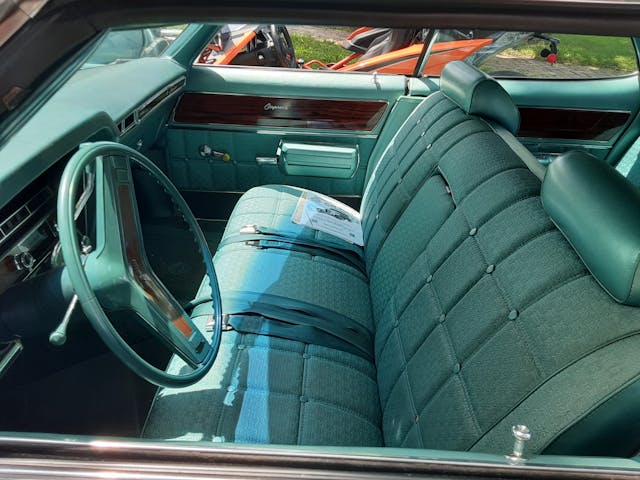
Coupes. Sedans. Hardtops. Convertibles. In trim levels from plain to totally fancy. And there was no fancier Chevrolet in 1970 than the Caprice, unless we want to engage in a discussion about the Monte Carlo. But that’s a conversation for another day.

In 1970, Caprice meant luxury from GM’s contribution of Detroit’s Low Priced Three, which back then consisted of Chevrolet, Ford, and Plymouth. Ford was making hay with its similarly luxurious LTD. Plymouth, meanwhile, had recently canned the top-trim VIP nameplate and its best model was the somewhat contradictorily-named Sport Fury Brougham.
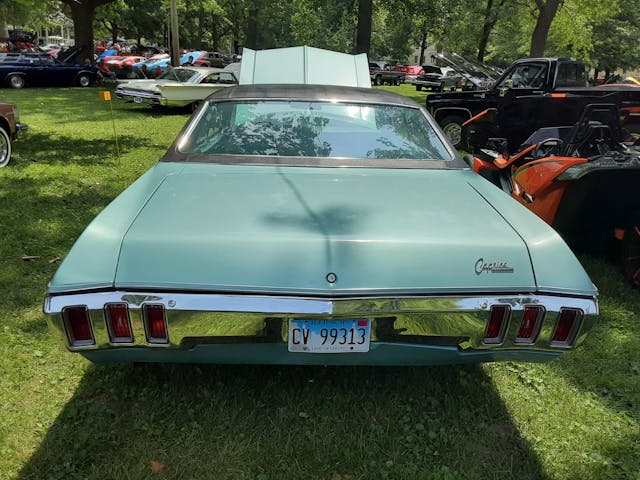
But in 1970 GM was still a near-impenetrable juggernaut, the 800-pound gorilla of U.S. motordom, and so the Caprice and Impala were extremely popular.
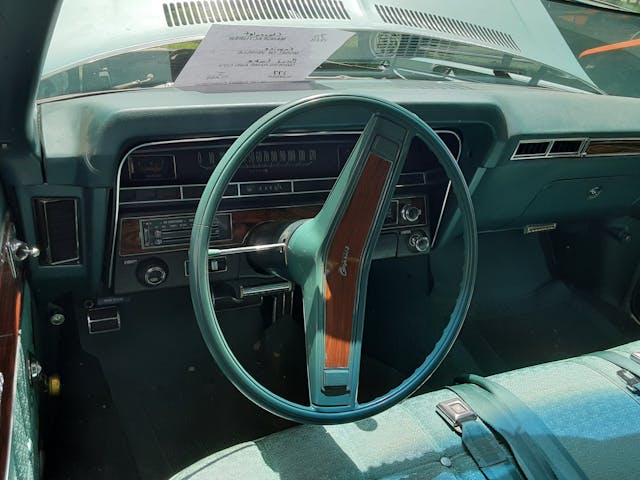
First appearing in 1965 as a four-door hardtop only, as a super-deluxe appendix to the popular Impala line, the Caprice became its own model in 1966, adding station wagons to the mix. By 1970, it was an integral part in the full-size Chevrolet line, available as two-door and four-door hardtops, as well as the wood-sided Kingswood Estate station wagon, available in two- and three-seat models.
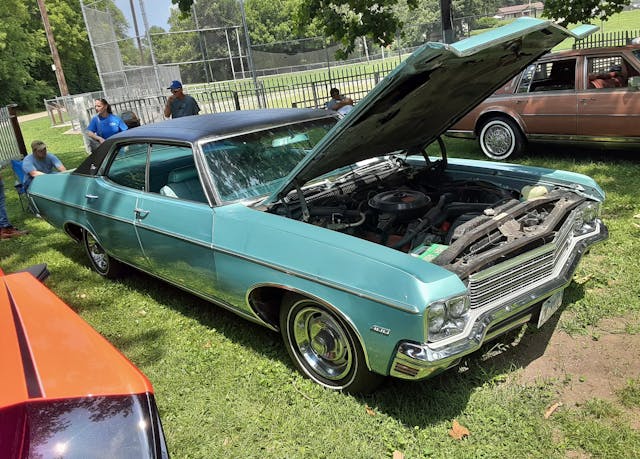
The 1970 Caprice Sport Sedan retailed at $3527 ($27,912 today) before options. Curb weight was 3905 pounds. At the time, Chevrolet didn’t break out models by trim level and body style, but from what I could glean from my automotive library, 92,000 Caprice V-8s were built for 1970, in all body styles.
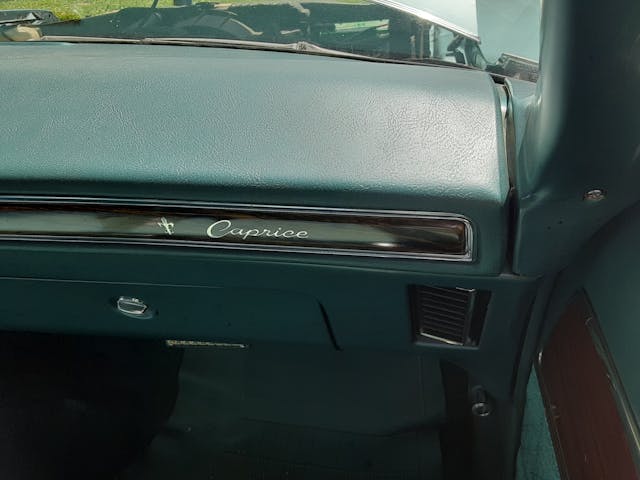
Most expensive Caprice that year was the three-seat Kingswood Estate, at $3866 ($30,594). There was no convertible that year; if you wanted to go topless in 1970 you had to settle for an Impala. A Caprice convertible would appear for 1973.
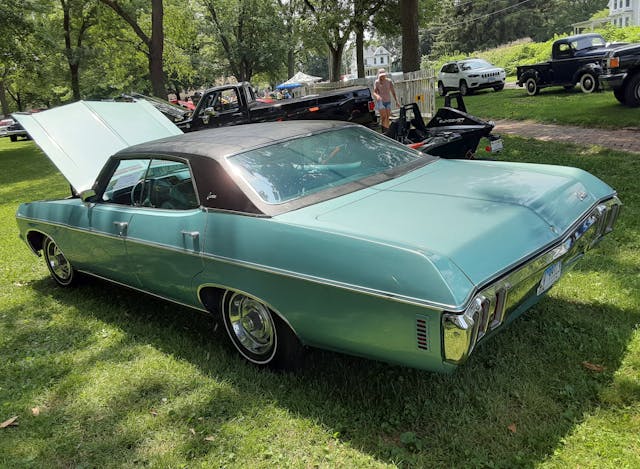
This Caprice, absolutely gorgeous in Misty Turquoise with matching turquoise brocade interior, was spied at the annual car show in Bishop Hill, Illinois, a tiny enclave with Swedish roots in Henry County, Illinois. I attend every year, and it never disappoints. Today’s subject was my favorite car at the show this year.

If you’ve read enough of my columns, you know that I love Detroit land yachts and I love turquoise. I was about three-quarters through my walkthrough of the show and had just taken pictures of a gorgeous 1971 Oldsmobile 442 convertible when I spied this off to my left. Zounds! After stopping for approximately 12 seconds to photograph the 1979 Seville parked next to it, I commenced drooling over this Caprice.
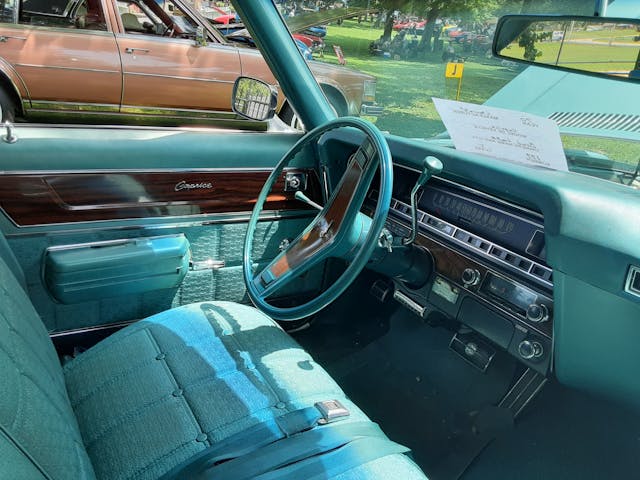
My favorite body style and my favorite model. So sharp. And although I would have preferred the color-keyed factory wheel discs and fender skirts, this remarkably well-preserved example was just as pretty with its Chevy Rally Wheels and whitewalls.
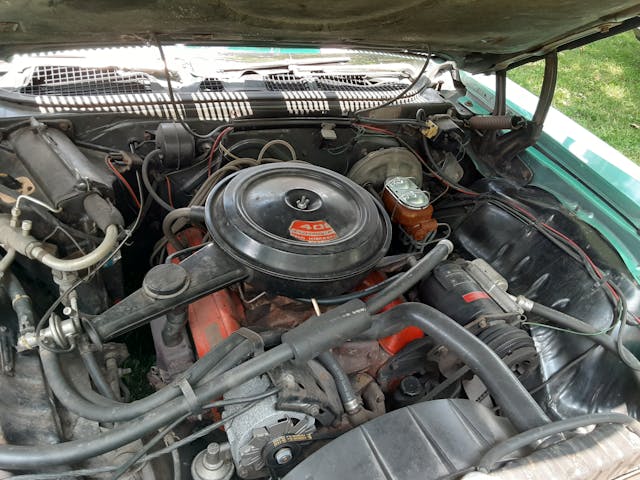
It also had the optional 265-horsepower Turbo-Fire 400-cubic-inch V-8, a step up from the base 250-hp, 350-cu-in V-8. All the better to motivate you while riding in turquoise brocade, cushioned comfort.
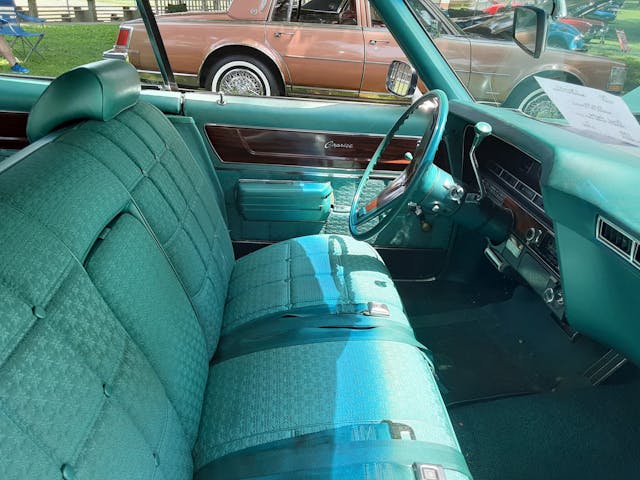
As the 1970 brochure stated, “Some people have professional interior consultants design their living area. Some people. You. All you need to do is choose the Caprice interior that strikes your fancy … everything is color and design coordinated. Seat shape and material, carpeting, wall and ceiling fabric, instrument panel form and function. Everything. Beautiful.”

Such a comfy car, in such beautiful colors! I loved it. Every bit of it. And I walked away feeling just a little bit sad that you can no longer get American cars like this. Caprices, LeSabres, Bonnevilles. They were such great cars: Chevrolet built 162,800 full-size cars in 1970. Today? Zero. But some still live on, even in this day and age. I salute them.
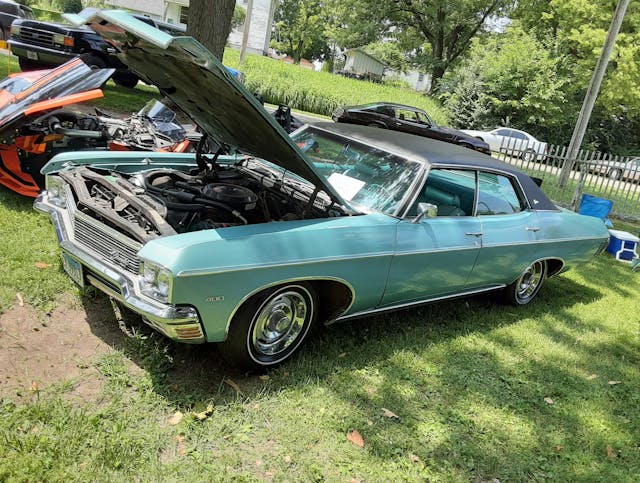
***
Check out the Hagerty Media homepage so you don’t miss a single story, or better yet, bookmark it. To get our best stories delivered right to your inbox, subscribe to our newsletters.


It’s a 1970 four-door Caprice. A boat. How could it ever be called a “Sport Sedan” ?
It was more a marketing term, I guess. On GM cars of that era, the “Sport Sedan” had no B-pillar between the front & rear windows and the doors had frameless glass; the “4-Door Sedan” version did have a pillar in that area and had doors with framed windows. The “4-Door Sedan” was (in my opinion) very clunky-looking. When all the windows were down in the “Sport Sedan”, it was one big open area from A-pillar to C-pillar. It was great! Except when you went through an automated car wash – you had to keep some towels in the car to catch and/or dab up water that made it past the thin rubber gasket attached the the chromed trim strip attached to the leading edge of the rear-door windows. It actually didn’t seal too well. 🫤
I think some manufacturers used the term “Hardtop Sedan” for their version of “Sport Sedan”.
My dad bought a 1970 Biscayne new in 69. Great car. 4 door straight six. Still have it with 210,000 miles. Unfortunately rust is taking it over. But full size did 108 mph on the highway. Back seat was fun too.
My first car was the same colour but it was a impala custom 2 doors with rally wheels and the skirt panels
My friends mom had one similar same color. I remember there was a enormous ash tray that was packed with butts with red lipstick on them. We cruised everywhere in that boat.
I love the color. It’s funny to se all the little details on the interior that today is now replaced by dull or plastic bits that have no style.
My 1961 Impala Convertible, 4 speed , 3 Deuces. Green with a white top…From the Janesville plant…we lived in Rockford Ill and I drove it home from Janesville because my grandparents lived there and Grandpa had purchased it for me, my first brand new car. A week later and showing it off, opening everything of course…driving home, a buddy behind pulled up and honked. We stopped and he said,”Your taillights aren’t working.” We opened the trunk and the factory had run the taillight wires through the left trunk lid hinge….! I worked for my grandfather’s furniture store and another driver and I used to drive up the hill by the Chevy plant, because the new cars would come out the gate and turn right to go up to the trucking area…used to see some tire burning going up that hill!!!!
Boy, I kinda started something…I did not mean to defame Janesville Assembly or its many dedicated workers. I should have left out Janesville. That would have stressed the “Friday-built”, which I think was the real problem.
In fairness-my sister’s 90s Suburban was a Janesville build and assembly quality was great on that one.
My hat’s off to the tens of thousands Janesville (and other) plant workers who helped provide us with many of the cars we treasure today.
One of my high school friends had a tree business and one of his clients had this same Caprice, which at the time, (around 1988) was just an old car with a bad transmission. My friend was given the car and had the transmission fixed and it was obvious the car was cherished and well maintained in all other fashion, the interior was perfect and the paint was clean.
I remember my friend had my 6 year old nephew sit on his lap and steer as we drove down a very busy 2 lane road then he told my nephew to turn off while he put his hands behind his head. I was in the backseat and the whole incident was horrifying but the kid did ok. Of course our ace in the hole was we were bigger than everything else on the road!
I suppose the moral of the story for me as with all the Klockau greats is that the vehicle had depreciated to the point of worthlessness but no matter the value if it feels right it’s worth a try!
I learned to drive on my high school’s Drivers’ Ed car, a 1970 Impala four-door hardtop. It had the 350-2V and Turbo Hydramatic. Really nice-driving car. Mid-quarter, it was replaced by a 1971, and I did not like ti nearly as well. Other than perhaps a better ride, it was inferior to the 1970 in most any way that a 16-year-old cared about: slower (heavier, I would guess), mushier handling, less steering feel than the 1970, and – to my eyes – not nearly as attractive. It did downshift at part throttle easier, but that hardly made up for its detriments.
The subject car is very pretty, and I really like that interior; the cloth reminds me of the 1968 Impala Custom Coupe I had for many years. I never liked the 400 small-block, though, due to the way it was designed with Siamesed cooling passages. That seemed like an unnecessary compromise to durability to me. Whether it ever caused any issues, I don’t know, but I still don’t like it! I would have gone with the 350, or moved up to the 402 (or 454!) big-block.
To the point about build quality: my grandparents were well enough off to afford any cars they wanted. My grandmother drove a Packard convertible in the 1930s; she was very much a “car gal”. In the 1960s, they bought the ramshackle house next door, tore it down, and built a three-car garage attached to their house by a breezeway, with an apartment underneath it for the cook. They drove only American cars, mainly Buicks — a wagon, a Skylark with a sunroof, etc., and a four-door Chev Nova as a work car for my grandfather — until the mid-1970s. But they gradually fell out of love with those cars as the build and material quality issues mounted. The first break was a manual 260ZX 2+2 (space for grandkids!), followed by a manual 280ZX, and finally a manual 300ZX turbo. Accompanying them by the 1980s were an Audi quattro wagon, red, manual, followed by a 300TD wagon (sadly a slushbox, of course). They did try a Buick Reatta (a disaster) and always had a Wagoneer, but that car had very light duties, mainly for hauling kids around during vacation visits. When GM lost them, it meant they were losing their best and most lucrative type of customer. I have owned a couple kf GM and Mopar units over the years, mainly older ones, for for daily driving, I would no more buy a domestic car today (except a manual V-series Cadillac) than I would buy a Chinese-brand EV. Too much uncertainty and too little quality. A domestic SUV, maybe — a Yukon, or a Suburban — but I do not need one and don’t want to pay that much for gas.
*…, but for daily driving, …
Loved my 67 caprice 2 door. Light blue, had a 327, bucket seats, console and no vinyl top. Wish I appreciated it better. I keep looking for one to come up for sale. Would love to find one with the 427 big block!
I learned to drive on a 1970 Impala, in 1978, very similar to this one. We had a silver exterior with a dark green interior. It had the coolest fiber optic turn signal and light indicators, front, on each fender and the rear was on the package shelf, in the middle. It also was a pillar less 4 door. It was a 350 4 barrel with 10:1 compression. My dad swapped lower compression heads due to the poor-quality fuel back then. It was a loaded-up car, A/C, and full power accessories. I still fondly remember that car.
A high school friend of mine had a 2 door, he drove that car all over the place.
He installed a Pioneer Super tuner with 2 each Jensen 6×9 in the rear deck.
Was one of the best sounding car stereos in town.
I really miss all the car colors you could order back then, now it is
Black, White, Grey and maybe a Red now and then.
Interiors are even worse, mostly grey!
I had no idea I was growing up in the Golden Years of American made cars.
RIP because it is really boring now….